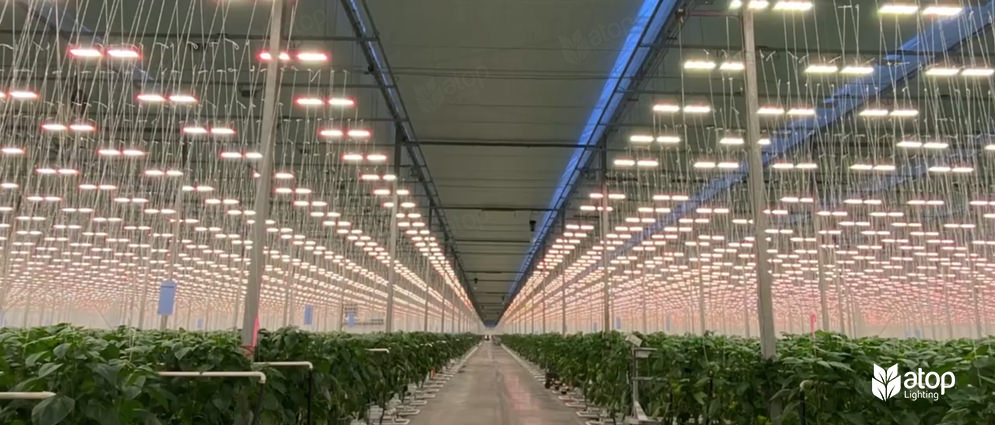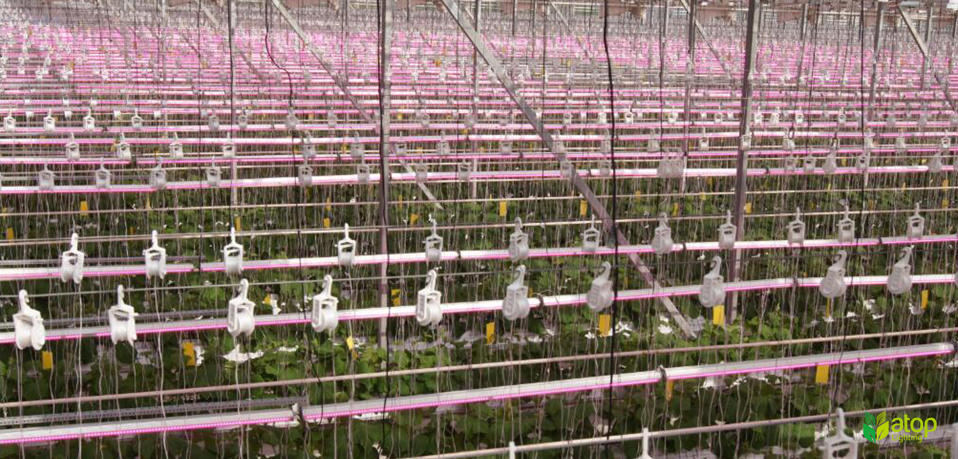8 Key Elements for Developing Your Greenhouse Lighting Strategy
Natural sunlight is fantastic, but it's not always reliable. That is why supplemental lighting is required in greenhouses. However, your greenhouse's potential may be limited without a well-defined lighting strategy. An effective lighting strategy is critical for the success of your operation.
What should be involved in developing a greenhouse lighting strategy? This post is your guide. We will discuss eight key elements for creating a winning greenhouse lighting strategy for healthier plants and higher yields.
Your objective
When developing a comprehensive greenhouse lighting strategy, it is crucial to have a clear understanding of your objectives from the outset. Whether you aim to maximize crop yield, enhance flavor and color, or optimize operational costs, these objectives will serve as the guiding principles that shape your decisions. Understanding your objectives also ensures that your lighting strategy aligns with your desired outcomes.
Evaluating environment
Every greenhouse is different. Seemingly bright greenhouses can have hidden pockets of darkness or uneven light distribution. Therefore, it is crucial to thoroughly evaluate your greenhouse environment. This evaluation should include factors such as the size and layout of your greenhouse, climatic conditions, construction materials, existing infrastructure, and more.
By evaluating your greenhouse environment, you gain valuable insights. Are there specific areas lacking sufficient light for your crops? Do some plants require additional light during certain times of the day? This information forms the foundation for designing a targeted lighting strategy that addresses any shortcomings and maximizes the potential of your entire growing space.

Light requirements of your crop
Different plant species, and even varieties within the same species, can have different lighting needs throughout their growth cycles. Since you have evaluated the solar and climate conditions of your greenhouse, you know how much supplemental lighting your crops need based on their light requirements.
One of the primary considerations is the light spectrum. PAR (400 to 700 nm) drives photosynthesis. For instance, blue wavelengths are essential for vegetative growth, while red and far-red light can promote flowering and fruiting.
Other critical factors include light intensity and the DLI (Daylight Integral). DLI quantifies the total amount of PAR a plant receives in a day. Some plants, like leafy greens, flourish under moderate light levels, while others, like tomatoes and peppers, require long hours of intense light.
Moreover, the duration of light exposure, or the photoperiod, plays a crucial role in plant development. Some crops, like lettuce and spinach, thrive under longer day lengths, while others, such as chrysanthemums (short-day plants), need long nights (11–12 hours or more) to quickly initiate and develop flowers.
Certified LED grow lights
Now, it's time to explore the lighting solutions for your objectives. We strongly recommend selecting certified LED grow lights. Look for lights that carry certifications like UL (Underwriters Laboratories) or ETL (Electrical Testing Laboratories). These certifications guarantee that the lights meet strict safety standards, giving you peace of mind and ensuring long-lasting performance.
Additionally, certified LED grow lights are designed and engineered to provide optimal light spectra for plants. LEDs emit the precise wavelengths that plants require, ensuring maximum photosynthetic efficiency and overall vigor.
Lighting distribution and uniformity
Why is uniform lighting critical? Just imagine some plants basking in sunlight while others languish in shadows. What will happen? It is obvious that uneven light leads to uneven growth. Plants closer to the light source receive more energy, potentially stretching and becoming leggy, while those in shadows become weak and underdeveloped.
To achieve more uniform lighting distribution, it is recommended to have a greenhouse light plan. A well-designed greenhouse light plan provides an accurate simulation of the quantity and layout of grow lights required for your location and business goals, ensuring light uniformity.
Combining inter-canopy lighting with top lighting also helps to achieve better light uniformity. Positioning fixtures along the plants can fill in gaps and reach lower leaves. With strong and consistent lighting, plants grow better and become healthier.

Control systems and automation
For most greenhouses that implement CEA (Controlled Environment Agriculture), a control system is indispensable. This provides unmatched convenience and flexibility, especially for managing commercial greenhouses.
Some control systems allow you to easily adjust light intensities, spectra, and schedules to match the specific needs of your crops throughout their growth cycles. With features like automated dimming, sunrise/sunset simulation, and customizable light recipes, you can tailor lighting environments that promote optimal plant development and yield.
Others may seamlessly integrate with other greenhouse systems, such as climate control and irrigation, enabling comprehensive automation and data-driven decision-making.
Here is a video showcasing an LED grow light equipped with a 0-10V dimmer and an RJ signal port, enabling compatibility with the TrolMaster Hydro-X system for advanced light control. This setup allows you to determine when to turn the lights on/off and automatically dim the light when it becomes overheated.
Energy efficiency of the lighting system
An energy-efficient lighting system not only contributes to reduced operational costs, but it also aligns with the growing emphasis on sustainable and environmentally responsible practices in the horticulture industry.
As the age of fluorescent lighting has officially come to an end, it is time for you to switch to an LED lighting system. However, not all LED grow lights are equal. When selecting lighting fixtures, check out the PPE (Photosynthetic Photon Efficacy). PPE indicates how much usable light (PAR) the light generates per watt of electricity consumed. The higher the PPE value, the more efficiently the light converts electricity into usable light for plants, leading to greater energy savings.
Maintenance
Proper care and maintenance are required to ensure that your lighting system continues to perform at its peak. Schedule regular maintenance to maximize its longevity and performance.
Firstly, clean your lighting fixtures regularly. Over time, dust, dirt, and debris can accumulate on the lenses and reflectors, reducing light output and overall efficacy. Use a soft cloth to avoid damaging delicate components.
Next, check for any signs of wear, damage, or potential issues with your lighting components. By identifying and addressing problems early on, you can mitigate the risk of unexpected failures, minimize downtime, and extend the lifespan of your lighting system.
A well-designed greenhouse lighting strategy covers many factors. From your objectives, growing environment, lighting requirements of crops, LED grow lights selection, light uniformity, control system, and energy efficiency, to maintenance, every element should be considered carefully. If you have any questions about the greenhouse lighting strategy, please feel free to contact us.

